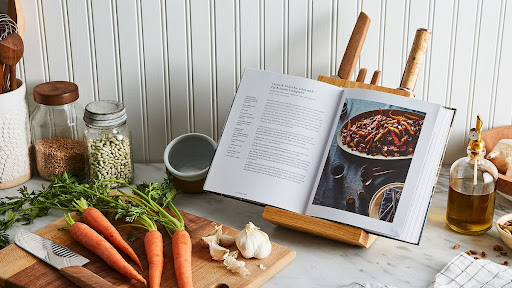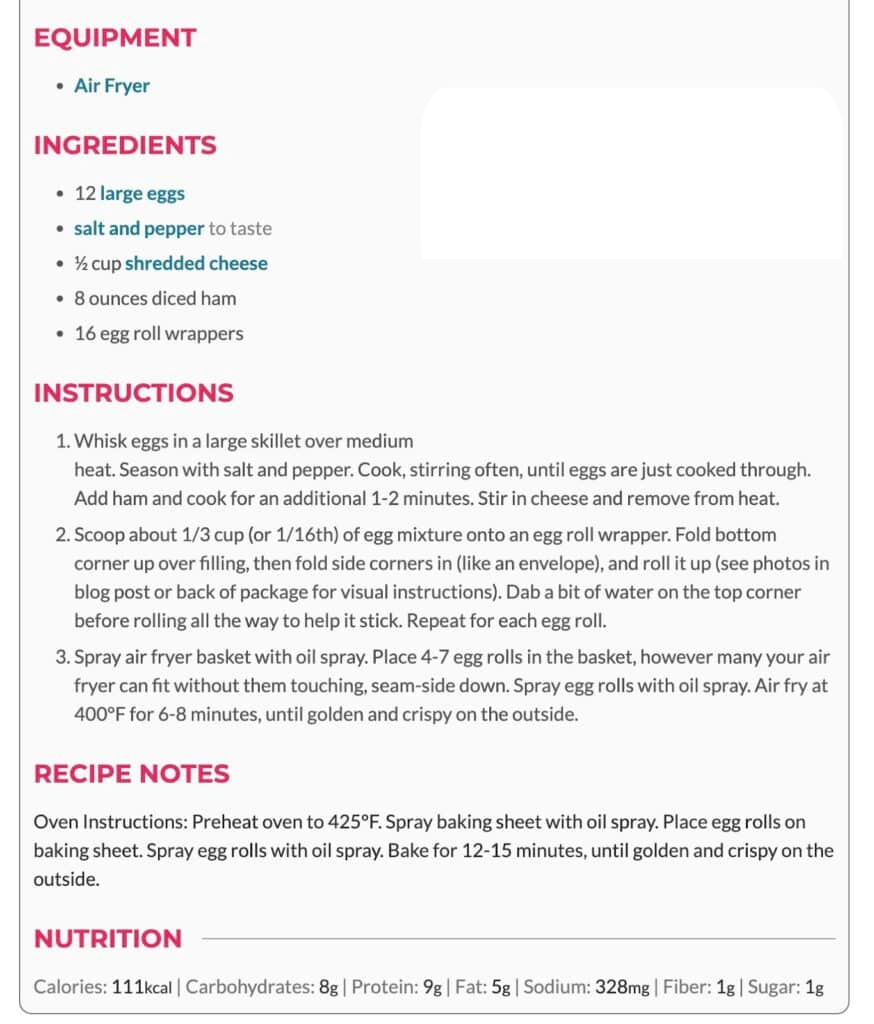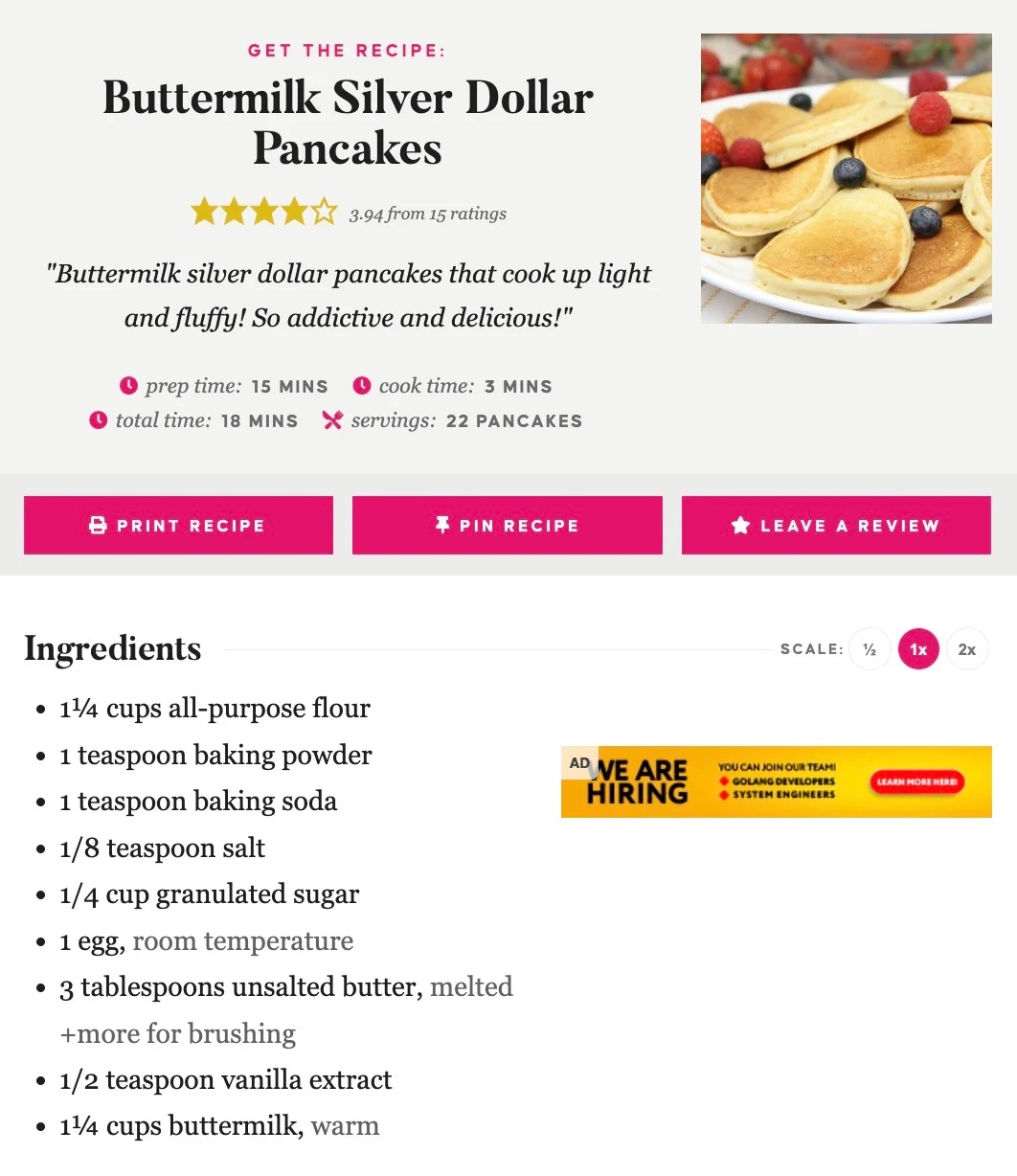
A great recipe isn’t just a list of ingredients and steps-it’s an experience. The best recipes tell a story, engage the reader, and offer clear, foolproof instructions. Whether you’re a food blogger, cookbook writer, or home cook sharing your creations, your recipe should be easy to follow, reliable, and memorable.
We’ll show you how to craft recipes that feel personal, stand out, and truly connect with your readers-all while staying original in a world of AI-generated content.
1. Know Your Audience To Build Connection
Understanding your audience is the foundation of a compelling recipe. Are you writing for beginners who need step-by-step guidance, or experienced cooks who appreciate technical details?
- Cater to skill levels - Provide clear instructions for beginners while offering expert tips for advanced cooks.
- Consider dietary needs - Include variations for vegan, gluten-free, or low-carb diets.
- Embrace cultural context - Share the origins of a dish and provide ingredient alternatives for different regions.
By personalizing recipes, you create a deeper connection with your audience, fostering trust and loyalty.
2. Start With A Strong Concept
Originality is the foundation of a great recipe. Before writing, ask yourself:
- What makes this recipe special? A personal memory, a cultural influence, or a unique technique?
- How does it stand out from similar recipes? A twist on a classic, a healthier version, or an unusual ingredient?
- Why should someone try it? Is it time-saving, indulgent, or perfect for a specific occasion?
A strong concept ensures your recipe isn’t just another variation of an existing dish—it offers something fresh.
3. Craft An Engaging Introduction
Your introduction sets the stage. Instead of simply describing the dish, make it personal:
❌ "This is a delicious pasta recipe."
✔️ "I first tasted this creamy tomato pasta on a rainy night in Rome, and it instantly became a comfort-food staple in my kitchen."
Consider including:
- A personal story or inspiration
- A brief history of the dish
- What makes your version unique
Engaging introductions build a connection with your audience, making your recipe more memorable.
4. Structure Your Recipe For Clarity
A well-structured format improves readability and execution. Follow this standard structure:
Title
Make it descriptive yet concise.
✔️ Fluffy Lemon Ricotta Pancakes with Honey Drizzle
❌ Ricotta Pancakes
Headnote (Brief Introduction)
Provide context or background for the recipe. Example: "Inspired by my travels to Italy, these ricotta pancakes are light, airy, and perfectly balanced with a drizzle of honey."
Ingredients List
- List in the order they appear in the instructions.
- Use consistent formatting.
- Separate components if needed (e.g., Cake and Glaze sections).
Instructions
- Use numbered steps for clarity.
- Keep sentences short and direct.
- Provide cooking cues, such as: "Bake for 25 minutes until golden brown and a toothpick inserted comes out clean."
Storage And Serving Suggestions
- Include shelf life, reheating methods, and best serving options.
Breaking down ingredient lists prevents confusion. For complex recipes, create sections like “Batter,” “Filling,” and “Frosting” to keep things clear.
5. Use Precise And Consistent Ingredient Listings
A well-structured ingredient list prevents confusion and enhances readability. Follow these best practices:
- List ingredients in order of use. This makes it easier for readers to follow along.
- Be specific. Instead of "1 onion," write "1 medium yellow onion, finely chopped."
- Use consistent measurements. Stick to one system (metric or imperial) and avoid mixing unless necessary.
- Offer substitutions. This makes your recipe more versatile (e.g., “Use maple syrup instead of honey for a vegan option”).
Precision in ingredients ensures better results and a smoother cooking experience.
6. Write Clear, Actionable Instructions
Great recipes guide the reader seamlessly. Follow these principles:
Start Each Step With A Verb
❌ "The onions should be sautéed until golden brown."
✔️ "Sauté the onions over medium heat until golden brown, about 5 minutes."
Provide Specific Times And Sensory Cues
✔️ "Bake for 25-30 minutes, or until the edges are golden and a toothpick inserted in the center comes out clean."
Break Down Complex Steps
If a step is too long, split it into numbered or bulleted instructions.
Example:
- Heat oil in a pan over medium heat.
- Add garlic and sauté for 1 minute until fragrant.
- Stir in tomatoes and cook for 5 minutes until softened.
This structure prevents confusion and ensures clarity.
7. Testing, Refining, And Troubleshooting
To guarantee success, test your recipe multiple times:
- Follow your own instructions exactly. If you instinctively adjust something, update the recipe accordingly.
- Ask others to test it. Their feedback can reveal unclear steps or missing details.
- Ensure consistency. If a reader follows your recipe precisely, they should achieve the same results.
- Troubleshooting failures. If common mistakes occur, include solutions (e.g., “If the dough is too dry, add 1 tablespoon of milk”).
Thorough testing builds trust with your audience and increases the likelihood of positive reviews and shares.
8. Make It Shareable And Engaging
A recipe that stands out is one that people want to share. Enhance engagement by:
Adding High-quality Images:
- Use natural lighting and avoid harsh flashes.
- Capture different angles-overhead shots for bowls, side angles for layered dishes.
- Show the human element-hands mixing batter or slicing fruit add warmth and relatability.
- Optimize images for mobile to ensure fast loading without sacrificing quality.
Encouraging Interaction:
- Ask readers to share their results or variations in the comments.
- Provide ingredient swaps for different diets (vegan, gluten-free, keto).
- Write with personality-avoid generic descriptions to create a stronger connection.
Making Your Recipe Easy To Share And Print:
- Offer a print-friendly version for convenience.
- Add social media sharing buttons to encourage online sharing.
- Ensure formatting is clean and readable on all devices.
A conversational tone, engaging visuals, and user-friendly features help build a loyal readership and keep your recipes circulating online.
9. Ensure Your Recipe Is Truly Original
In the age of AI-generated content, authenticity is more important than ever. To verify that your recipe descriptions and instructions are truly original and not AI-generated, you can use an AI detector freetool before publishing.
This step ensures your content remains unique, resonates with readers, and ranks better in search engines.
10. SEO Optimization: Connect With More Readers
To reach a broader audience, optimize your recipes for search engines. Start by incorporating relevant keywords naturally in titles, descriptions, and headings-phrases like “easy chocolate cake recipe” can improve visibility.
Craft compelling meta descriptions with keywords to entice clicks and provide a clear summary of your recipe. Page speed is another crucial factor; compress images and use fast-loading formats like WebP to ensure a smooth user experience.
Additionally, implementing structured data, such as recipe schema markup, allows search engines to display rich snippets that highlight key details like ratings, cook time, and ingredients.
By making your content SEO-friendly, you increase its chances of ranking higher in search results, ultimately attracting more readers to your recipes.
11. Add Value At The End Of Your Recipe
Enhancing user experience goes beyond the recipe itself. Include:
- Storage tips - How long the dish stays fresh and the best way to store it.
- Serving suggestions - Pairing recommendations (e.g., “This curry goes well with basmati rice and garlic naan”).
- Leftover ideas - Creative ways to repurpose the dish (e.g., “Use leftover roasted vegetables in a frittata”).
These extra details make recipes more practical and valuable.
FAQs
How Do I Make My Recipes Stand Out From Others?
Focus on originality, storytelling, and clarity. A unique twist, a compelling introduction, and precise instructions can set your recipe apart.
Should I Include Both Weight And Volume Measurements?
Yes, if possible. Weight measurements improve accuracy, while volume measurements are more familiar to home cooks.
How Do I Prevent Common Cooking Mistakes In My Recipe?
Use precise instructions, sensory cues (color, texture, aroma), and troubleshooting tips to guide readers.
Why Is It Important To Verify Originality In Recipe Writing?
Ensuring originality prevents duplication, enhances credibility, and improves SEO performance. AI detection tools can help confirm your content is uniquely yours.
Final Words
A standout recipe is more than just a list of steps-it’s an experience that invites readers into your kitchen. By prioritizing originality, clarity, and engagement, you create recipes that are not only reliable but also unforgettable. Start refining your favorite dish today using these principles, and watch your recipes gain the attention they deserve!

